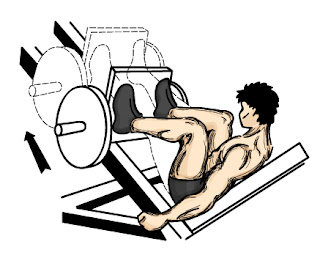When most people start off with resistance exercise, the first thing they are usually shown is a resistance machine. Indeed they form the basis of most people's workouts in places that have them such as leisure centers etc. After a while that person will learn that free-weights are actually better for you than machine based.
Bodyweight would be at the summit of this hierarchy and it is the main basis of my own exercise routines, with free-weights added in for quite specific purposes.
However, whilst even I shunned machine weights for the more holistic formats of resistance training, they do have an important role to play depending on certain circumstances. Indeed I have been reminded of their importance all the more following a wrist overuse injury I suffered two months ago.
Table of contents
- When machines rule
- When machines suck
- When it doesn't matter if machines rule or not
- My own experience
When machines rule
No this isn't referring to a futuristic world dominated by Skynet and the Terminators. Machine based resistance training, despite being much maligned, does have its benefits:
- A controlled stable range of motion - Despite being a weakness in the grand scheme of things machine based resistance exercise provides a solid stable platform with a very controlled and restricted range of motion. This is good if you lack the stability or auxiliary muscle strength to perform the free-weight version and reduces the associated injury risk. This also leads to the next point...
- Great for beginners working out on their own - Once shown how to use a machine, beginners can go to a gym and use them without a fitness instructor or personal trainer. Free-weights and bodyweights require more specific cues in regards to form, much of which is removed with the static stable range provided by machines.
The leg press machine. Great for heavy loads with massively reduced pressure on the spine than doing the same by squatting. Picture from JohnSifferman.com.
- Drop sets - A favourite exercise method for bodybuilders, machines allow for a far quicker and more efficient drop in the weight load between sets.
- No need for a spotter - Using machines means no need for a spotter to help in case you can't handle the weight. For example when performing a bench press you may need a spotter to prevent yourself crushing your chest with the bar if your muscles give out. With the seated chest press, gravity doesn't work with or against you. Indeed if you feel your chest muscles failing, you usually have a foot lever you can use to take the load and return the weight to the starting position.
When machines suck
The main disadvantages of machine based resistance training are:
- They do not properly mimic real world movements.
- They remove the important aspect of stability. Free-weights and bodyweight exercise require you maintain your stability and form, involving all four muscle functions: primary, secondary, synergist and fixator, all in a holistic manner.
- Similar to above, machines only really work the main primary muscle.
When it doesn't matter if machines rule or not
At the end of the day there is another aspect of machines that make them a necessity... injury.
Injuries happen to everyone at some stage. Sometimes it only takes a week or so to overcome and depending on the exact injury, it might not affect you much at all. Though, what about when it is a long-term injury and stops you performing certain bodyweight and free-weight exercises? This is where machines can be your saviour!
It does however strongly depend on the type of injury as some might leave you unable to do any resistance training at all. For example an elbow or knee injury would make any work on that limb incredibly difficult to do without making things worse. Common sense should apply.
My own experience
Two years ago due to an injury to the long-head of my biceps I was not allowed to perform exercises that involved overhead actions until the inflammation died down and it healed. This meant I couldn't do pull-ups and handstands.
I was gutted. Yet to overcome this I adapted. Whilst I performed below parallel free-weights for my shoulders, I used a cable machine to work out my lats with seated rows.
A couple of months ago due to a combination of factors (outside of fitness) and a misdiagnosis by my local hospital's minor-injury department I had suffered a bad injury in my wrist that meant I couldn't do my normal bodyweight and free-weight exercises as I needed to use my hands!
The only way I could work out without using my hands was to use machines as you don't necessarily have to grip the handle to use the machine.
Sure it isn't perfect and no doubt certain parts of my training will have gone backwards but not as much as it would have if I couldn't perform any exercise on those muscles at all. Indeed, whilst you do lose the holistic aspect, you can still make gains in some regards depending on how you program you training.
So the next time you hurt your hands or wrists and want to get a workout done without putting more pressure on your injury making it worse, consider how resistance machines could help you work around it!
If you have any questions or want advice on an injury workaround then feel free to ask away in the comments or send me some feedback!
Lyle Richardson,
Gym Pal - Your friend in the world of fitness




0 comments:
Post a Comment